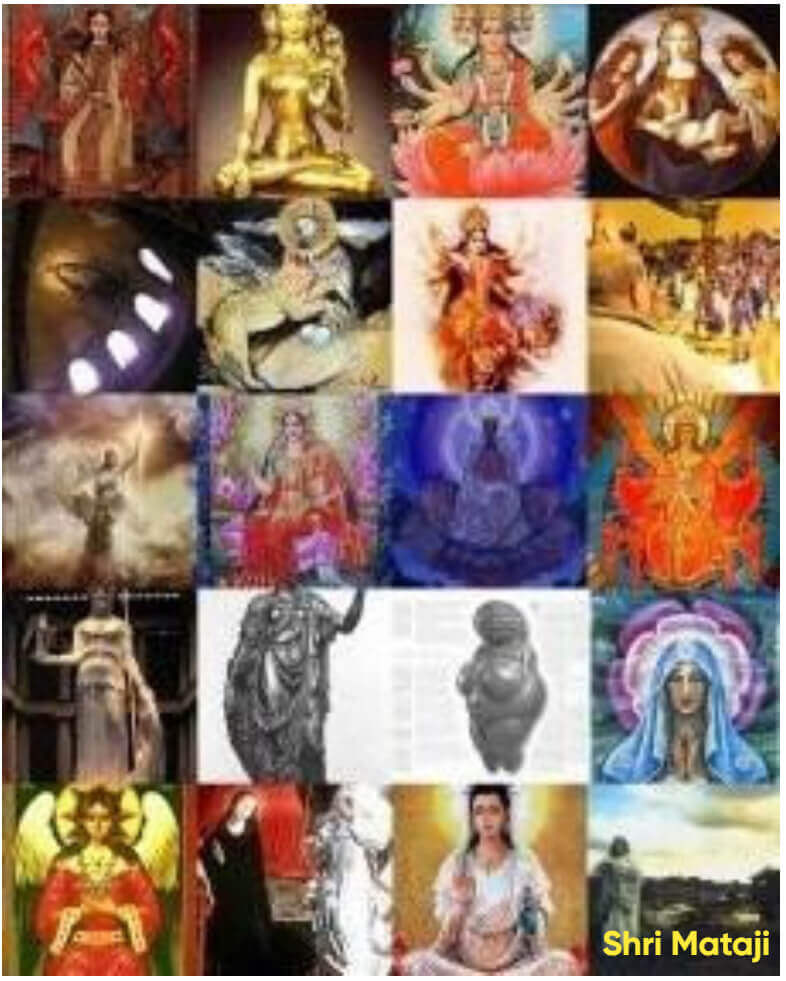The Light Of God Almighty within
The Light of God Almighty is not metaphor—it is the cool, shadowless radiance revealed in the Sahasrara and proclaimed by all scriptures. Through the lived experiences of Kash, Arwinder, and Lalita, this Light is described as brighter than many suns, yet gentle to the eyes, fixed above the Divine Mother, and casting no shadows. It is the Light of Brahman, the Light of Christ, the Nur of Allah, the Clear Light of the Buddha, and the Ohr Ein Sof of Jewish mysticism. This Light is the essence of God, the inner illumination of the soul, and the universal truth that transcends all religious boundaries. It is the supreme secret of divine knowledge—cool, eternal, and dwelling within all beings.
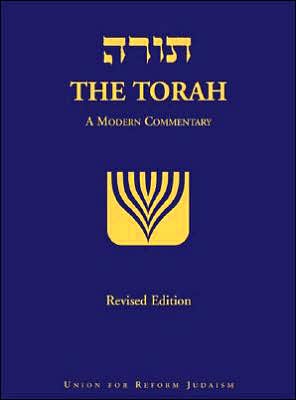
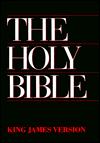
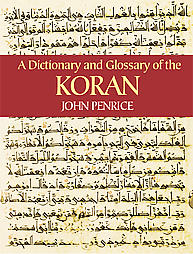
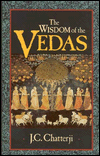

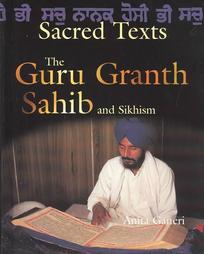
"Original Christianity—which was identical with Sanatana Dharma—taught that the Divine Light "was the light of men....the true Light, which lighteth every man" (Jn 1:4, 9) without exception. That Light cannot be alienated from us, but is ever the essence of our existence, making us "the children of light.” (Jn 12:36) This is the real Gospel, the Good News, of real religion.”
www.atmajyoti.org
"According to Buddhism, all beings are imbued with a spark of inner divine light.... The Jewish mystics use similar words when they speak of the inner spark or the spark of God. The Koran, referring to man, talks about the little candle flame burning in a niche in the wall of God's temple. Almost inevitably a spiritual search becomes a search for divine or sacred light. By cultivating our inner core, we search for this light in ourselves as well as the divine.”
Lama Surya Das
The Divine Light
Since Self-Realization the Light fascinated Kash. On the very first day itself he had stood alone on the endless cover of clouds, trying to understand where was this incredible, utterly peaceful Shangri-La that he had stumbled upon. There was one distinguishing Reality of this celestial landscape that held him spellbound — The Light! It was shining above at a distance he was unable to discern. Kash had kept gazing at it, spellbound by its indescribable uniqueness and infinite luminosity. It was an extremely bright globe, much brighter than many suns. In spite of its dazzling brightness it never ever hurt the eyes. Since Kash had never seen anything that bright he thought it must be the sun, but at a much closer proximity. His father, finding no other logical explanation, also agreed.After months of meditation it began to slowly dawn that what Kash was seeing could not possibly be the sun. But Kash kept on insisting that it had to be as nothing he had seen on Earth shone so bright. He just thought that he was seeing it from a much closer distance!
Uncertainty came into his father inquisitive mind. He had this peculiar habit of not believing anything unknown or speculative unless proven beyond a shadow of reasonable doubt. The sun that his son was seeing disturbed. Not only was it just above the Great Adi Shakti but it did not emit heat!
But the lingering question was why was it visible only at Her place and nowhere else in the Kingdom of the Almighty Creator? If it was indeed the sun then it had to be seen at all the dwellings of all the Immortal Messengers that Shri Mataji used to take Kash to.
On September 11, 1994, at 13:05 p.m., after reading the word Shaibhang (Self-illumined) at the opening stanza of the Sri Guru Granth Sahib, the consciousness of Self-Realization indicated that there was more to this Truth than met the mind. If Guru Nanak had described the Divine World of Reality to be Shaibhang, or Self-Illumined, then the 'very bright Sun' that Kash spoke about could not be true. If the Spirit of the Living God was the Ultimate Reality (Al-Haqqah) then this 'Sun' at Her Abode was an inferior object.
The Divine Light is unlike anything known to man
Moreover, Kash's extraordinary observation of this 'Sun' created more questions and doubts as he maintained that:
i) This 'Sun' is always behind Her at an angle but is not directly above, that is, at about 45 degrees.
ii) It did not rise and fall like the earthly sun. The 'Sun' above Shri Mataji Nirmala Devi is fixed and stationary.
iii) This 'Sun' illuminates the entire Supreme Abode of the Great Celestial Mother. Every thing is seen very clearly and in fine detail, down to the different hues of skin tone. (That is why Kash was absolutely sure that Shri Jesus had a light brown skin, and wearing whitish gray clothes stretched taut by the sheer size of His muscular body.)
iv) Kash could not ascertain the exact size and distance of this 'Sun' despite his numerous visits.
v) In spite of its intense brightness this 'Sun' emitted no heat. On the contrary, Kash said that the rays are cool!
Then one day he astounded his father by claiming that there are no shadows from the rays of this 'Sun'! In all his journeys Kash never saw any shadow in the Kingdom of the Spirit. Though questioned many times he maintained that this Sun does not produce any shadow, physical properties that are ubiquitous in our universal sun. Kash was told by his father to clarify this issue with Shri Viswamata Nirmala Devi. There was something strange about this 'Sun' that Kash daily witnessed.
Kash meditated and the Divine Kundalini at the sacrum bone took him up the Tree of Life into the Bridal Chamber. He burst through the clouds and reached His Dominion. The Infinite Light shone ever so brilliantly from above the Eternal Throne of the Great Mater Divinae Gratiae (Mother of Divine Grace) as She sat in Bliss and Joy. Shri Lok Mata met him and the question was put forward. The Great Primordial Guru explained that it was not the sun that he was seeing but the Light. They then meditated, after which Kash returned back to this hate-filled world of Louis Farrakhans and Osama bin Ladins.
His Light exists within all human — This Revealed Truth is Absolute.
His Light emits cool rays — This Revealed Truth is Absolute.
His Light cast no shadows — This Revealed Truth is Absolute.
Spirit beings have no shadows — This Revealed Truth is Absolute.
This Revelation of the Light is the collective truth of the Holy Scriptures. This Light has been announced by all His Messengers. Since the dawn of civilization highly evolved souls have been searching relentlessly for this Light. This is the Light of Shri Krishna. This is the Light of Shri Jesus. This is the Light of Shri Buddha. This is the Light of Allah, of Yahweh, of Brahman or any other name that humans give to Him. God Almighty is Light!
These experiences of His Light are within. This is the Reality of the Microcosm and the Macrocosm. We all live within God and He lives within us as The Light.
Note: At around 9.20 p.m. on March 23, 2003 Kash's father took his eight-year-old sister Lalita into her room to sleep. He pulled out a mattress from beneath her bed and laid down. (Since she insists, or rather pleads that her father sleep in her room every night there is always a few minutes of conversation.)
While lying down she started counting the number of lights in her room - four light bulbs, one table-lamp, a florescent wristwatch and Shri Mataji's altar flame. Both confirmed that there were seven.
Then she said there were eight and that both had left out the Light above Shri Mataji in her Sahasrara. (Lalita continues to declare that the Light is always above Shri Mataji at all times.)
Her father asked her a few questions.
Father: "Is the Light warm or cool?”
Lalita: “Cool.”
Father: "Is it very bright like the sun?”
Lalita: “It is very bright but you can look at it.”
Father: "What color is the Light?”
Lalita: “Yellow.”
Father: "Yellow or bright like silver?”
Lalita: “Like bright yellow. But what you mean silver?”
Father: "Silver, like metal silver.”
Lalita: “I cannot imagine the color.”
Father: "What about metallic silver?”
Lalita: “But what you mean"metallic"? Tell me something which is metallic silver.”
Father: "Like the sun in the afternoon.” (This was a dumb response.)
Lalita: “That's not silver. I do not know what papa means.”
Father: "Like the color of the fork and spoon.”
Lalita: “That color?”
Father: "Is it that color?”
Lalita: “No.”
Father: "Then what color?”
Lalita: “Yellow.”
Father: "Thank you Lalita.”
Lalita: “You are welcome papa.”
The next day the father waited for his 13-year-old son Arwinder to come back from school to double-check with him. He returned at around 4.40 p.m. and his father told that he will ask just one question about Shri Mataji in his Sahasrara. Arwinder asked what was the question.
Father: "Arwinder, what color is Shri Mataji's Light?”
Arwinder: “Like white, white yellow.”
What is above Shri Mataji's head?
Tue May 4, 2004 10:23 amToday morning I was updating some files and decided to confirm yet again what has been cross-examined numerous times over the years. At about 7.30 am 10-year-old Lalita was asked about the Light:
Father: What is above Shri Mataji's head?
Lalita: The Light.
Father: Can you look at it for a long time?
Lalita: Yes, you can look at it.
Father: Does it not blind you?
Lalita: It doesn't blind me.
Father: Is it different from the sun you see on Earth?
Lalita: Yes.
Father: Why?
Lalita: It's smaller.
Father: Anything else?
Lalita: It doesn't blind you. What else ...... It's brighter. OK?
Father: Thank you Lalita.
This Light is always above the Great Divine Mother, and this Spirit of God Almighty resides within the Sahasraras of all humans. Unlike Her incarnation on Earth as Shri Mataji Nirmala Devi, now an aging octogenarian, She is eternally youthful and of unsurpassable beauty. Kash, Arwinder and Lalita have always maintained that they have never seen any woman as beautiful as Shri Maha-Devi who is truly the Great Primordial Goddess. (Shri Saraswati, Laxshmi and Kali are also extremely beautiful but none are comparable with the Maha-Devi.)
Tue Mar 15, 2005 2:59 pm
A few months ago I asked my ten-year-old daughter Lalita what that immensely brilliant Light above the Adi Shakti in her Sahasrara is. She replied"God!"
I remained silent for a long time to absorb the immensity of that single word answer.
![]()
Supreme Secret of Divine Knowledge
Times of India
“A lot has been said and written by spiritual gurus and religiously inclined persons on how to attain the ultimate goal of self-realisation and holistic well-being. Despite advancement, both technological and economic, we are still groping to achieve peace, tranquility, universal brotherhood and tolerance.
The confused and wavering mind of Arjuna calmed down only after having gained divine knowledge from Sri Krishna. Sri Krishna called this divine knowledge the supreme secret of God. In the Bhagavad Gita, chapter 4, Sri Krishna tells Arjuna how divine knowledge was handed down from the dawn of creation. In the beginning of this universe, He taught the immortal karmayoga to Vivasvan. Vivasan in turn conveyed it to Manu and Manu imparted it to his son Iksvaku. Sri Krishna told Arjuna that only the wise seers and perfect masters who have known and seen God can impart this knowledge and not those who possess just scriptural knowledge. A sadguru who can make us see that divine light within us is an enlightened soul.
Mere bookish knowledge does not make one an enlightened soul. Kabir and Mira were not scholars. Even their worst critic would acknowledge that they were intiated into brahm gyan by their gurus namely Swami Ramanand and Sant Raidass. Since inception, the world has witnessed so many avatars and perfect masters. None of them advocated just recitation of mantras and chanting of hymns as a means of self-realisation. It is true that chanting of hymns in praise of God is a sure way of stabilizing the mind. The perfect master imparts the devotee with a methodology for knowing and seeing God. There is immediate and instant realisation of God within us when he places his holy palm on the fore-head. Brahm Gyan is energy transmitted by the perfect master on to the seeker of God....
When a seeker of truth receives brahm gyan, he or she instantly experience divine light within. Divine knowledge comprises instant and immediate practical experience of divine light, the holy name, inner music and holy nectar. God has been described as the divine light by holy scriptures like the Vedas, Shastras, the Upanishads and the puranas. As there is fire hidden in wood and it can be produced only through a technique, there is divine light hidden in every particle. A perfect master can show us that divine light within us. Our scriptures profusely emphasise that our bhakti starts only after we see and experience that divine light within us. The simran or smaran or remembrance of that eternal name which is already present in our inner-self can be done with neither tongue not with the lips. That holy name is inexpressible and hence beyond any language. The simran of this holy name makes us pure, take us on the path of true bhakti and salvation. Divine music or the anhad vani echoes in our inner-self and awakens feelings of forgiveness, morality, satisfaction, compassion and truth within us and through constant practice, we attain eternal peace and pleasure. Amrit or holy nectar is present in plenty in the human body. Amrit keeps the child alive in the womb of his mother. On taking birth, the child cries as he gets detached from God.
The role of the perfect master is to link us with the inner world which has been forgotten by us. Attainment of supreme knowledge is the right of every human being, whosoever he or she may be. It is only after we see divine light within our inner-self that self-transformation and holistic well-being shall become reality.”
SUPREME SECRET OF DIVINE KNOWLEDGE
Times of India
The Universal Light: An Analysis of Mystical Experience and Scriptural Symbolism
Introduction
Across the diverse tapestry of human spirituality, the symbolism of light emerges as a profound and recurring motif. From the primordial declaration "Let there be light" in Genesis to the radiant descriptions of Brahman in the Upanishads, light has perennially served as a metaphor for the divine, for enlightenment, and for ultimate reality. It is the symbol of wisdom that dispels the darkness of ignorance, the beacon of hope in the midst of suffering, and the very essence of the divine presence. This paper explores the universality of this symbolism, not as a mere abstract concept, but as a lived, experiential reality. It posits that the frequent proclamations of light in the holy scriptures of the world are not simply poetic allegories, but are rooted in a consistent, cross-cultural mystical experience of a divine, inner luminosity.
To ground this exploration, this paper will analyze the detailed, contemporary accounts of three children—Kash, Arwinder, and Lalita—who have reported profound and consistent experiences of an inner, divine Light. Their phenomenological descriptions provide a unique and compelling modern case study through which to examine the scriptural references to light. By juxtaposing their lived experiences with the sacred texts of major world religions—including Hinduism, Christianity, Islam, Buddhism, and Judaism—this paper will argue that the characteristics of the Light they describe align remarkably with the scriptural and mystical traditions. This analysis will seek to demonstrate that the Light proclaimed by all scriptures is not a multiplicity of different lights, but a singular, universal phenomenon, experienced and interpreted through different cultural and theological lenses. Ultimately, this paper will contend that these experiences, both ancient and modern, point to a shared mystical core of human spirituality, a direct perception of the divine as a radiant, inner Light.


